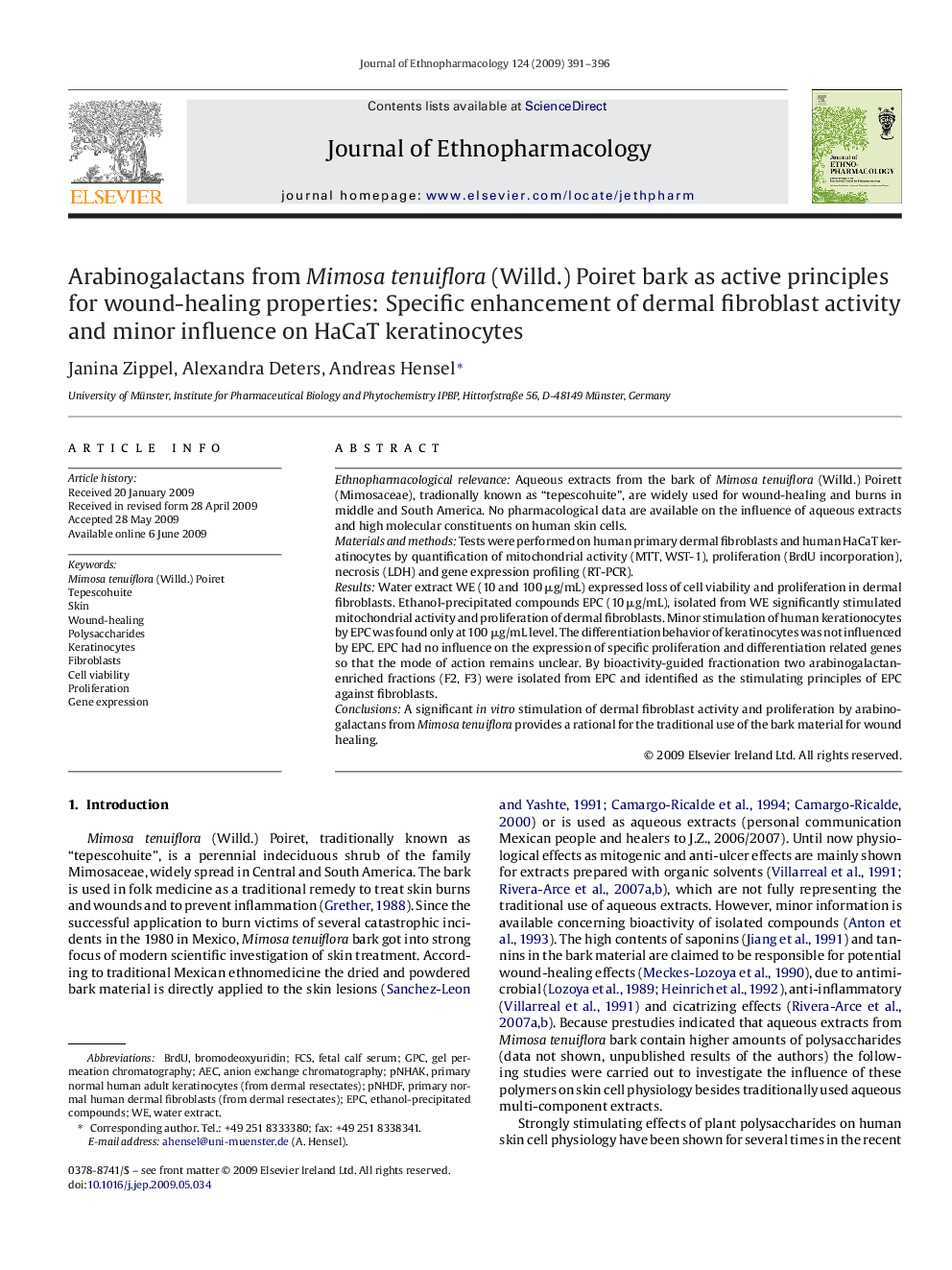| Article ID | Journal | Published Year | Pages | File Type |
|---|---|---|---|---|
| 2546701 | Journal of Ethnopharmacology | 2009 | 6 Pages |
Ethnopharmacological relevanceAqueous extracts from the bark of Mimosa tenuiflora (Willd.) Poirett (Mimosaceae), tradionally known as “tepescohuite”, are widely used for wound-healing and burns in middle and South America. No pharmacological data are available on the influence of aqueous extracts and high molecular constituents on human skin cells.Materials and methodsTests were performed on human primary dermal fibroblasts and human HaCaT keratinocytes by quantification of mitochondrial activity (MTT, WST-1), proliferation (BrdU incorporation), necrosis (LDH) and gene expression profiling (RT-PCR).ResultsWater extract WE (10 and 100 μg/mL) expressed loss of cell viability and proliferation in dermal fibroblasts. Ethanol-precipitated compounds EPC (10 μg/mL), isolated from WE significantly stimulated mitochondrial activity and proliferation of dermal fibroblasts. Minor stimulation of human kerationocytes by EPC was found only at 100 μg/mL level. The differentiation behavior of keratinocytes was not influenced by EPC. EPC had no influence on the expression of specific proliferation and differentiation related genes so that the mode of action remains unclear. By bioactivity-guided fractionation two arabinogalactan-enriched fractions (F2, F3) were isolated from EPC and identified as the stimulating principles of EPC against fibroblasts.ConclusionsA significant in vitro stimulation of dermal fibroblast activity and proliferation by arabinogalactans from Mimosa tenuiflora provides a rational for the traditional use of the bark material for wound healing.
Graphical abstractFigure optionsDownload full-size imageDownload as PowerPoint slide
